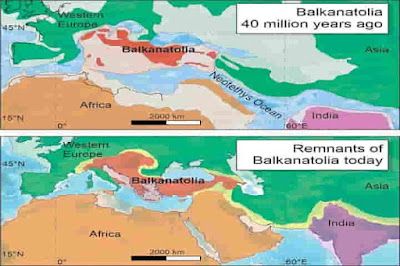40 million years ago Asian animals moved to Europe because of “Balkanatolia”
A low-lying continent 40 million years ago, that was once boasted of some striking animals could have played a vital role in helping Asian mammals to move to Europe’s southern part, suggests a new study states a report in sciencealert.com.
The research published in Earth-Science Reviews refers to this place as “Balkanatolia” – placed between Asia, Europe and Africa -- which scientists say with the drop in the sea levels, around 34 million years ago, became a land bridge.
In their study, palaeogeologist Alexis Licht and his colleagues from French National Centre for Scientific Research, mentioned that "When and how the first wave of Asian mammals made it to south-eastern Europe remains poorly understood.”
Also read: 200 Million Years From Now, India, Somalia, Kenya and Madagascar may merge into a super-Continent
The appearance of the bridge catalytic as 34 million years ago with the Eocene epoch coming to an end, a vast number of mammals native to Western Europe vanished with new Asian mammals emerging. This unexpected disappearance is called as Grande Coupure.
However, with fossils discovered recently in the Balkans, the timeline of these events has turned upside down as it points at a region that came into being which facilitated mammals to colonise southeastern Europe almost five to 10 million years before the Grande Coupure happened.


Comments
Post a Comment